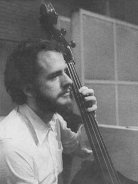Wednesday, 11 May 2005
Salvador Dali (1904-1989)
Topic: Music and Art

I don't know a great deal about art, but I do know when I like a picture. When I was twelve or so, I can remember buying a small print of this painting of the Crucifixion and hanging it over my bed. I don't think I knew who had painted it at the time or what it was called but it certainly caught my eye. Later, I learnt that it was the work of the Spanish painter,
Salvador Dali. He called it "Christ of St John of the Cross" and it was painted in 1951 during his more classic period.
Salvador Felipe Jacinto Dali y Domenech was born on the 11th May 1904, in Figueras, Catalonia, Spain. He was really quite eccentric in his dress and appearance, with a big, swirling moustache. In his twenties, he became extremely interested in Sigmund Freud's ideas on subconscious imagery and learnt how to induce in himself a 'hallucinatory state' (a form of clinical paranoia!) in order to paint his bizarre dreamlike images. In 1929, he joined the Surrealist Movement but was eventually expelled from their ranks in 1937, when his paintings became more traditional in style.
Yes, I would call him a mad genius but he was truly a gifted artist with enormous talent and produced many brilliant works in his lifetime. He died on 23rd January 1989.
Thursday, 5 May 2005
Percy Heath (1923-2005)
Topic: Music and Art
It was Milt Jackson who wrote the tune, "Ain't But a Few of Us Left", which he recorded in 1981 on a
CD of that name with Oscar Peterson, Ray Brown and Grady Tate. A jazz vibraphone player, Milt "Bags" Jackson was the founder of the Milt Jackson Modern Jazz Quartet which eventually became known as the MJQ under the leadership of pianist, John Lewis. "Bags" was acutely aware that only a few giants remained from the time when jazz music was at its pinnacle. He died in 1999 and John Lewis died in 2001. Connie Kay, the drummer for the MJQ, died in 1994.

Now I see that yet another 'giant' has passed on,
Percy Heath, the bassist with the Modern Jazz Quartet for many years. Percy died last Thursday, 28th April 2005, aged 81 - just two days' short of his 82nd birthday. He had been suffering from bone cancer.
Although they did reunite in the 1980s, "
The Last Concert" of the MJQ was recorded on 25th November 1974. If I could only keep one out of our collection of Jazz CDs, it would be this one. They gave of their very best with Percy Heath giving
two of the most extraordinarily cohesive and marvellously balanced bass solos ever heard on that night. May he rest in peace.
Sunday, 24 April 2005
Niels-Henning ?rsted Pedersen (1946-2005)
Topic: Music and Art

I don't usually check the obituaries in the newspapers so I was shocked and saddened to discover yesterday that the superb Danish jazz bassist,
Niels-Henning ?rsted Pedersen, had passed away last Tuesday, apparently of heart failure. He would have been 59 on the 27th May.
We first came across him in 1975 on an LP of
Oscar Peterson with the Stephan Grapelli Trio, (recorded in 1973), and again on a double LP,
Oscar Peterson In Russia, (recorded in 1974). Then he featured in the 1975 Montreaux Jazz Festival LP playing with
Oscar Peterson on piano;
Milt Jackson on vibes;
Joe Pass on guitar;
Toots Thielemans on harmonica, and
Louis Bellson on drums - what a group! The track from this LP, "Au Privave", particularly sticks in the memory. We also have the set of four LPs from Montreaux '77 in which he 'jammed' with
Roy Eldridge on trumpet; drummer, Bobby Durham;
Dizzy Gillespie on trumpet;
Clark Terry on trumpet and flugelhorn;
Eddie 'Lockjaw' Davis on tenor saxophone; drummer, Jimmie Smith and
Ray Brown, that other superb jazz bassist.
From the mid-70's, he was a regular member of the Oscar Peterson Trio - one of the few jazz bassists who could keep up with Oscar's exceptionally fast runs! Again, we are lucky to have quite a few compact discs of the trio featuring his distinctive playing.
Niels-Henning, often dubbed "the great Dane" was one of jazz music's greatest virtuoso bass players with a superb technique and an individual style. He will be sorely missed.
Wednesday, 20 April 2005
Joan Miro
Topic: Music and Art
Joan Miro , the Spanish Surrealist painter, was born in Montroig, near Barcelona, (the capital of
Catalonia), on 20th April 1893. Incidentally, the letter 'J', called 'jota' in Spanish, (vocalised as hota), has a hard sound, so his name is pronounced
hoan mro, an alternative spelling of the more common Spanish name, Juan, (English equivalent: John), and not 'Joan', as in Joan of Arc or Joan Crawford!

In his early years, his work was more conventional - I particularly like his picture of the Chapel of Sant Joan d'Horta, an oil on canvas painted in 1917. In 1921, he settled in Paris and his work gradually became more surrealist. By 1930, he had perfected his own style using a limited range of bright colours, especially, blue, red, yellow, green and black, often in abstract blobs of colour with spots and lines - simple forms with a definite childlike quality. He also created etchings and lithographs, worked in watercolour, pastel and collage, and produced some notable ceramic sculptures, such as the two large murals,
Wall of the Moon and
Wall of the Sun, for the UNESCO building in Paris.
After the Spanish Civil War, he returned to Spain. In 1956, he moved to Palma de Majorca, where he died on 25th December 1983, at the age of 90. His villa is now transformed into the Miro Museum. If you visit Barcelona, there is a large ceramic Miro mural on the outside wall of Terminal B at the airport. Other examples of his art can be seen in the
Miro Foundation in Barcelona and all around the city, as well as in many other museums around the world.
Wednesday, 6 April 2005
Andre Previn
Topic: Music and Art
 Andre Previn
Andre Previn was born in Berlin on 6th April 1929. As a child he studied at the Berlin Royal Conservatory and the Paris Conservatory before his family emigated to the United States in 1939 - just in time to escape Hitler's persecution of the Jews. Andre Previn is one of the World's most versatile musicians, an award-winning composer of film scores, orchestral and chamber music, a conductor and a jazz pianist. He has tried his hand at everything. This has been, I think, his greatest fault.
He could have been a modern-day Mozart if he had concentrated on composing classical music. Like Mozart, he was a child prodigy. He studied composition in California and whilst still at school started working on musical scores for Hollywood films. In 1958, he did the scores for
Gigi followed by
Porgy and Bess,
Irma La Douce and
My Fair Lady.
He could have been one of the greatest jazz musicians ever - if he had stuck to playing jazz. He first became interested in jazz after hearing
Art Tatum,
Bud Powell and
Charlie Parker. His 1957 album of
My Fair Lady with
Shelly Manne became a best seller. Many people do not realise that nearly all the great jazz pianists were trained in the classics before graduating to jazz. Had Mozart been alive today, I am sure he would have been utterly fascinated by jazz music, which often involves 'impromptu composition' around the melody being played. In a jazz group, this 'impromtu composition' is often bounced back and forth amongst the players. The late bassist,
Ray Brown, with whom Previn recorded
Jazz at the Musikverein, was a grand master of this art.
However, Previn could not choose between his love of jazz and his love of the classics. He turned back to the classical world and worked with many world-famous orchestras including ten years with the London Symphoney Orchestra and eight years with the Pittsburg Symphony Orchestra.
In 1995, he returned briefly to jazz when he recorded his concert at The Musikverein, in Vienna. In 1998, his first opera,
A Streetcar Named Desire, premiered in San Francisco.
Without doubt, he is a genius, a giant in the world of music. But, from my point of view, I will always think of him as a great jazz pianist.
Newer | Latest | Older
 I don't know a great deal about art, but I do know when I like a picture. When I was twelve or so, I can remember buying a small print of this painting of the Crucifixion and hanging it over my bed. I don't think I knew who had painted it at the time or what it was called but it certainly caught my eye. Later, I learnt that it was the work of the Spanish painter, Salvador Dali. He called it "Christ of St John of the Cross" and it was painted in 1951 during his more classic period.
I don't know a great deal about art, but I do know when I like a picture. When I was twelve or so, I can remember buying a small print of this painting of the Crucifixion and hanging it over my bed. I don't think I knew who had painted it at the time or what it was called but it certainly caught my eye. Later, I learnt that it was the work of the Spanish painter, Salvador Dali. He called it "Christ of St John of the Cross" and it was painted in 1951 during his more classic period.




 Now I see that yet another 'giant' has passed on,
Now I see that yet another 'giant' has passed on,  I don't usually check the obituaries in the newspapers so I was shocked and saddened to discover yesterday that the superb Danish jazz bassist,
I don't usually check the obituaries in the newspapers so I was shocked and saddened to discover yesterday that the superb Danish jazz bassist,  In his early years, his work was more conventional - I particularly like his picture of the Chapel of Sant Joan d'Horta, an oil on canvas painted in 1917. In 1921, he settled in Paris and his work gradually became more surrealist. By 1930, he had perfected his own style using a limited range of bright colours, especially, blue, red, yellow, green and black, often in abstract blobs of colour with spots and lines - simple forms with a definite childlike quality. He also created etchings and lithographs, worked in watercolour, pastel and collage, and produced some notable ceramic sculptures, such as the two large murals, Wall of the Moon and Wall of the Sun, for the UNESCO building in Paris.
In his early years, his work was more conventional - I particularly like his picture of the Chapel of Sant Joan d'Horta, an oil on canvas painted in 1917. In 1921, he settled in Paris and his work gradually became more surrealist. By 1930, he had perfected his own style using a limited range of bright colours, especially, blue, red, yellow, green and black, often in abstract blobs of colour with spots and lines - simple forms with a definite childlike quality. He also created etchings and lithographs, worked in watercolour, pastel and collage, and produced some notable ceramic sculptures, such as the two large murals, Wall of the Moon and Wall of the Sun, for the UNESCO building in Paris. 